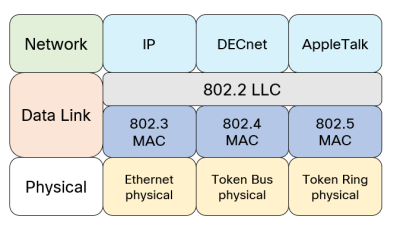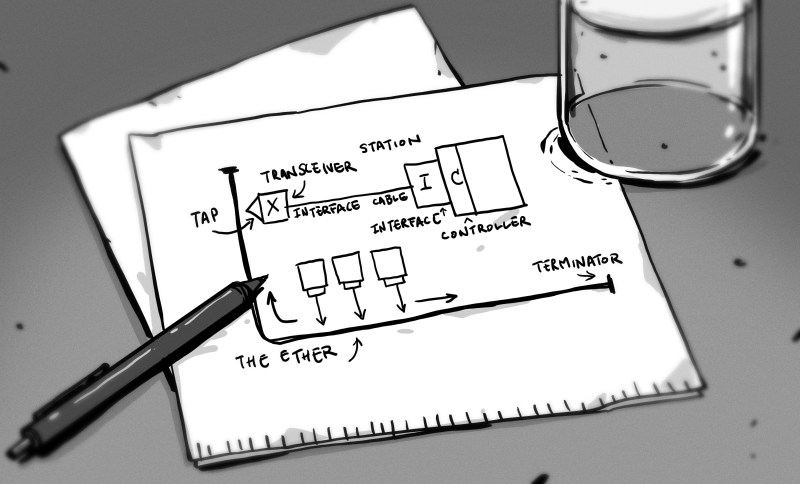Although Ethernet is generally considered to be a settled matter, its history was anything but peaceful, with its standardization process (under Project 802) leaving its traces to this very day. This is very clear when looking at the different Ethernet frame types in use today, and with many more historical types. While Ethernet II is the most common frame type, 802.2 LLC (Logical Link Control) and 802 SNAP (Subnetwork Access Protocol) are the two major remnants of this struggle that raged throughout the 1980s, even before IEEE Project 802 was created. An in-depth look at this history with all the gory details is covered in this article by [Daniel].

We covered the history of Ethernet’s original development by [Robert Metcalfe] and [David Boggs] while they worked at Xerox, leading to its commercial introduction in 1980, and eventual IEEE standardization as 802.3. As [Daniel]’s article makes clear, much of the problem was that it wasn’t just about Ethernet, but also about competing networking technologies, including Token Ring and a host of other technologies, each with its own gaggle of supporting companies backing them.
Over time this condensed into three subcommittees:
- 802.3: CSMA/CD (Ethernet).
- 802.4: Token bus.
- 802.5: Token ring.
An abstraction layer (the LLC, or 802.2) would smooth over the differences for the protocols trying to use the active MAC. Obviously, the group behind the Ethernet and Ethernet II framing push (DIX) wasn’t enamored with this and pushed through Ethernet II framing via alternate means, but with LLC surviving as well, yet its technical limitations caused LLC to mutate into SNAP. These days network engineers and administrators can still enjoy the fallout of this process, but it was far from the only threat to Ethernet.
Ethernet’s transition from a bus to a star topology was enabled by the LANBridge 100 as an early Ethernet switch, allowing it to scale beyond the limits of a shared medium. Advances in copper wiring (and fiber) have further enabled Ethernet to scale from thin- and thicknet coax to today’s range of network cable categories, taking Ethernet truly beyond the limits of token passing, CSMA/CD and kin, even if their legacy will probably always remain with us.
















Bob Metcalf would disagree that what we call Ethernet today is Ethernet. He wrote in a column a number of years ago that Ethernet was CSMA/CD. Switched networking is not Ethernet.
Yes, he did. But just because it’s switched doesn’t mean it has to be… There are still hubs sitting around that allow the same ethernet frames to be CSMS/CD… AND your NIC’s hardware and software today still support it.
Also, just an FYI, what people call WiFi, is also ethernet.
Irrelevant evangelicalism.
Worshipping a standard, instead of enhancing the purpose it’s intended to solve is pointless.
Always great to read about ethernet, an idea Metcalf supposedly outlined on a napkin :-) I remember in the 90s when a chip manufacturer allegedly cheated with frame timing for better benchmarks, but less compability. At some point Gibson tried to use ethernet to replace traditional MIDI, less successfully:-)
“Toking Ring”…now, I’m not say that something like that wasn’t involved in the conceptualization phase, but should that item actually say “Token Ring”?
Tolkien Ring…
One protocol to rule them all, one protocol to find them…
… and in the smoky haze, bind them.
I have no idea about the conceptualization of Ethernet, but I did her from Jake Feinler directly and in person that the members of Doug Engelbart’s lab at SRI who came up with ARPANET and all kinds of other things like video word processing, cut and paste, and the mouse to name a few got together on the weekends and enjoyed lots of herbal refreshment as well as some visionary chemicals which several Native American churches would readily approve of that came from DARPA experiments at SRI. She spoke of them using rolled up damp towels to block airflow under doors.